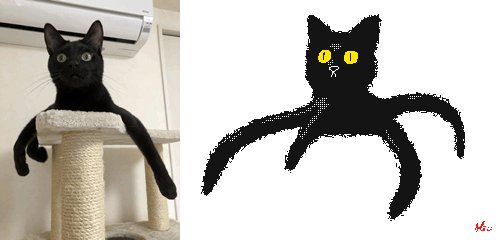#huitiful
Explore tagged Tumblr posts
Text


huitiful
phone + ipad wallpaper
#hui#lee hoetaek#day6.edits#pastel kpop wallpaper#kpop wallpapers#kpopedit#dailybg#uninet#pentagon#ptg hui#ptg#hui wallpapers#hui lockscreens#pentagon wallpapers#ptg wallpapers#ptg lockscreens#pentagon lockscreen#huitiful#minimal kpop wallpaper
16 notes
·
View notes
Text
Los hutíes reivindican el lanzamiento de un misil balístico contra el sur de Israel
Saná (EFE).- Los rebeldes hutíes del Yemen reivindicaron este sábado el lanzamiento de un misil balístico contra un «objetivo estratégico» en la localidad de Beersheba, en el sur de Israel, un ataque que según el Ejército israelí fue interceptado sin provocar daños o víctimas. El portavoz militar de los insurgentes, Yahya Sarea, dijo en un comunicado que el grupo aliado de Irán efectuó «una…
0 notes
Audio
#bandcamp#Triple Memory Buffer#Huitième Signal (bonus)#KENMORE Classic#music#audio#vaporwave#signalwave
2 notes
·
View notes
Text
A giant Huity! 🐙


Giant Octopus Plush and Crochet Pattern // Adopte Ton Poulpe
5K notes
·
View notes
Text

Alguien que me explique cómo hizo Netanyahu para comandar esta guerra contra todos estos: Biden Blinken Austin ONU Unión Europea Irán Qatar Egipto Jordánia Turquía La Liga Árabe El papa Organización Mundial de la Salud Sinwar Nasrallah Haniyah Autoridad Palestina Sudáfrica La Haya Brasil Colombia Noruega España Irlanda Francia Reino Unido UNRWA Justicia Israelí Lapid Eisenkot Ehud Barak Yair Golán Canal 12 Canal 13 Canal 11 Haaretz New York Times CNN BBC Al Jazeera Corte Penal Internacional Corte Internacional de justicia Hezbollah Hamas Huities Irakies rebeldes Siria Estudiantes de Columbia La izquierda internacional incluyendo la israelí Susan Sarandon Roger Waters Kamala “la mala” Nazis de todo el mundo Yemen
1 note
·
View note
Text
0 notes
Note

i’m moonlight cookie…..
YESS HUITIS ITS US ITS ITS UTS US SUJSHSBE HHSUUTS JJUUSUSUS
1 note
·
View note
Text
0 notes
Photo
Huity & Bushy will like this! 🐙😺

mmm…
41K notes
·
View notes
Text
Irán niega haber ayudado a los rebeldes hutíes de Yemen tras ataques de EEUU y amenaza de Trump
EL CAIRO (AP) — Irán negó de nuevo el domingo haber ayudado a los rebeldes hutíes de Yemen después de que Estados Unidos lanzara una ronda de ataques aéreos en su contra y el presidente Donald Trump advirtiera que Teherán sería considerado “totalmente responsable” por sus acciones. Los ataques mataron al menos a 31 personas, incluidas mujeres y niños, y dejaron más de 100 heridos, según el…
0 notes
Photo

COLLAGE
Jeune artiste Brestois de 30 ans, je me nomme Vincent Cann et j’exerce dans le domaine du collage numérique. J’en suis venu à cette forme d’expression par mon attrait pour la photographie. C’est grâce à internet et à ses nombreux outils que j’ai pu approcher la richesse photographique du monde entier quelque soient les époques. Historien de formation (à l’UBO de Brest), j’ai su unir mon attrait pour l’histoire et la photographie afin de produire du sens symbolique et esthétique au sein de mes créations. La technologie moderne a bouleversé nos schémas de pensée et notre représentation de l’univers. Notre faculté à nous extirper de l’attraction terrestre a transformé les notions de temps et d’espace et a abouti à l’avènement d’outils formidables comme le télescope spatial Hubble. C’est ainsi qu’est née chez moi l’idée de provoquer des rencontres entre différentes périodes de l’histoire et des espaces nouveaux. J’utilise pour cela les fonds des agences spatiales mais aussi les clichés des astronautes qui sont dans la station spatiale internationale. Mes choix vont des paysages de la Terre aux merveilles de notre système solaire en passant par les lunes, les nébuleuses et autres supernovas qui nous rappellent notre difficile approche du temps et de l’espace. Les emprunts que je fais au monde de la photographie vont des amateurs jusqu’au grands noms du huitième art. Ma pratique artistique se place dans ce que Michel de Certeau appelle le « réemploi » c’est à dire l’utilisation d’œuvres préexistantes comme matériaux de base déconnectés de leurs contextes ou signification première. La pratique du collage, qu’elle soit physique comme numérique, s’inscrit par essence dans ce contexte au même titre que bon nombre d’autres pratiques artistiques contemporaines.
3 notes
·
View notes
Text
Huity’s coming out for Pride month! 🐙👠

99 notes
·
View notes
Text
PORNOPTICON
BIBLIOGRAPHY
Agrest, Diana, “Architecture from Without: Body, Logic, and Sex,” Assemblage 7 (October 1988), pp. 28-41.
Agrest, Diana, Patricia Conway, and Leslie Kanes Weisman (eds.), The Sex of Architecture (New York: Abrams, 1997).
Bajac, Quentin and Didier Ottinger (eds.), Dreamlands. Des parcs d’attractions aux cités du future (Paris: Centre Pompidou, 2010).
Bancel, Nicolas et al., Zoos humains. De la Vénus Hottentote aux reality shows (Paris: La Découverte, 2002).
Banham, Reyner, Age of Masters: A Personal View of Modern Architecture (New York: Harper and Row, 1966).
Baudrillard, Jen, “Disneyworld Company,” Libération, March 4, 1996.
—, Utopia Deferred, Writing for Utopie, 1967-1978 (New York: Semiotext(e), 2006).
Bentham, Jeremy, Panopticon Writings (New York: Verso, 1995).
Birkin, Lawrence, Consuming Desire: Sexual Science and the Emergence of a Culture of Abundance, 1817-1914 (Ithaca, NY: Cornell University Press, 1988).
Bruno, Giuliana, “Bodily Architectures,” Assemblage 19 (December 1992), p.106.
—, “Site-seeing: Architecture and the Moving Image,” Wide Angle 19.4 (1997), pp. 8-24.
Bueno, María José, “Le panopticon érotique de Ledoux,” Dix-huitième siècle 22 (1990), pp. 413-21.
Butler, Judith, Bodies That Matter: On the Discursive Limits of Sex (New York: Routledge, 1993).
—, Excitable Speech: The Politics of the Performative (New York: Routledge, 1997).
—, Giving an Account of Oneself (New York: Fordham University Press, 2005).
—, the Psychic Life of Power: Theories on Subjection (Stanford, CA: Stanford University Press, 1997).
Califia, Pat, Public Sex: The Culture of Radical Sex (Pittsburgh: Cleis Press, 1994).
Case, Sue Ellen, Feminism and Theater (London: Macmillan, 1998).
Cass, Jeffrey, “Egypt on Steroids: Luxor Las Vegas and Postmodern Orientalism,” in Medina Lasanky and Brian McLaren (eds.), Architecture and Tourism: Perceptions, Performance and Place (Oxford: Berg, 2004).
Chapman, Michel, “Architecture and Hermaphroditism: Gender Ambiguity and the Forbidden Antecedents of Architectural Form,” Queer Space: Centers and Peripheries, Conference Proceedings, Sydney (2007), pp. 1-7.
Colomina, Beatriz, “Architectureproduction,” in Kester Rattenbury (ed.), This is Not Architecture: Media Constructions (New York: Routledge, 2002), pp. 207-21.
—, “Media as Modern Architecture,” in Anthony Vidler (ed.), Architecture: Between Spectacle and Use (New Haven: The Clark Institute/Yale University Press, 2008).
—, “The Media House,” Assemblage 27 (August, 1995), pp. 55-56.
—, Privacy and Publicity: Architecture as Mass Media (Cambridge, MA: The MIT Press, 1996).
Colomina, Beatriz (ed.), Sexuality and Space (New York: Princeton Architectural Press, 1992).
Debord, Guy, The Society of Spectacle, trans. Donald Nicholson-Smith (New York: Zone Books, 1995).
DeJean, Joan, The Reinvention of Obscenity (Chicago: University of Chicago Press, 2002).
Deleuze, Gilles and Félix Guattari, Mille plateau. Capitalisme et schizophrénie 2 (Paris: Minuit, 1980).
—, A Thousand Plateaus: Capitalism and Schizophrenia II (London: Continuum, 1987).
Derrida, Jacques, Monolingualism of the Other, Or the Prosthesis of Origin, trans. Patric Mensah (Stanford, CA: Stanford University Press), 1998).
de Sade, Marquis, “Projet de création de lieux de prostitution, organisés, entretenus et dirigés par l’État,” in Joseph F. Michaud, Biographie Universelle (Graz: Akademische Druck-U. Verlagsanstal, 1968).
Downey, Georgina and Mark Taylor, “Curtains and Carnality: Processual Seductions in Eighteenth Century Text and Space,” in Imagining: Proceedings of the 27th International Sahanz Conference, 30 June-2 July 2010 (New-castle, New South Wales).
Eisenstein, Sergei M., “Montage and Architecture,” Assemblage 10 (1989), pp. 110-31.
Fludernik, Monika, “Carceral Topography: Spatiality, Liminality and Corporality in the Literary Prison,” Textual Practice 13.1 (1999), pp. 43-47.
Foucault, Michel, Abnormal: Lectures at the Collège de France, 1974-75 (New York: Picador, 2003).
—, The Archeology of Knowledge (New York: Pantheon Books, 1972).
—, “Des espaces autres,” Revue d’Archittetura cronache e storia 13.150 (1968), pp. 822-23.
—, “Des espaces autres,” Revue d’Architecture (October 1984), pp. 46-49.
—, Discipline and Punish: The Birth of the Prison, trans. A. Sheridan (New York: Vintage, 1979).
—, Dits et écrits (Paris: Gallimard, 1994).
—, Essential Works, ed. Paul Rabinow and James D. Faubion (London: Penguin, 2001).
—, Foucault: Ethics, Subjectivity, Truth, ed. Paul Rabinow, trans. Robert Hurley et al. (New York: New Press, 1997).
—, Histoire de la Sexualité, 1. La volonté de savoir (Paris: Gallimard, 1976).
—, The History of Sexuality (New York: Vintage, 1990).
—, Il faut défendre la société, Cours au Collège de France, 1976 (Paris: Seuil, 1997).
—, L’archéologie du savoir (Paris: Gallimard, 1969).
—, Le pourvoir psychiatrique, Cours au Collège de France 1973-74 (Paris: Seuil, 2003).
—, “Les hétérotopies,” in Le corps utopique. Les hétérotopies (Paris: Lignes, 2009), pp. 28-29.
—, Les mots et les choses (Paris: Gallimard, 1966).
—, Naissance de la biopolitique, Cours au Collège de France 1978-79 (Paris: Seuil, 2004).
—, Naissance de la clinique (Paris: PUF, 1963).
—, The Order of Things (New York: Routledge, 2001).
—, Power/Knowledge: Selected Interviews and Other Writings, 1972-1977, ed. Colin Gordon (New York: Pantheon Books, 1980).
—, Technologies of the Self: A Seminar with Michel Foucault, ed. L.H. Martin, H. Gutman, and P.H. Hutton (London: Tavistock, 1988).
—, Les machines à guérir. Aux origines de l’hôpital moderne, 2d ed. (Brussels: Mardaga, 1977).
Foucault, Michel and Jeremy Bentham, Le panoptique, précédé de L’œil du pouvoir, entretien avec Michel Foucault (Paris: Belfond, 1977).
Haraway, Donna, Simians, Cyborgs and Women: The Reinvention of Nature, (New York: Routledge, 1991).
Hayles, N. Katherine, How We Became Posthuman: Virtual Bodies in Cybernetics, Literature, and Informatics (Chicago: University of Chicago Press, 1999).
Ingraham, Catherine, “Utopia/Heterotopia,” course description, Columbia University, 1989.
Koolhaas, Rem, Delirious New York: A Retroactive Manifesto for Manhattan, 2d ed. (New York: Monacelli Press, 1994).
Lebensztejn, Jean-Claude, Solitary Sex: A Cultural History of Masturbation (Cambridge MA: The MIT Press, 2003).
Le Brun, Annie, Les châteaux de la subversion, suivi de Soudain un bloc d’abîme, Sade (Paris: Gallimard, 2010).
Lyon, David, Theorizing Surveillance: The Panopticon and Beyond (London: Willan Publishing, 2006).
Manovich, Lev, “The Poetics of Augmented Space,” Visual Communication 5.2 (2006), pp. 219-40.
Marin, Louis, Utopies: Jeux d’espaces (Paris: Éditions de Minuit, 1973).
Martin, Reinhold, The Organizational Complex: Architecture, Media, and Corporate Space (Cambridge MA: The MIT Press, 2005).
McLeod, Mary, “Other Spaces and Others,” in Diana Agrest, Patricia Conway, and Leslie Kanes Weisman (eds.), The Sex of Architecture (New York: Abrams, 19960, pp. 15-28.
McLuhan, Marshall, Understanding Media: The Extensions of Man (New York, Signet, 1964).
Mulvey, Laura, “Visual Pleasure and Narrative Cinema,” Screen 16.3 (Winter 1975), pp. 6-18.
Otero-Pailos, Jorge, Architecture’s Historical Turn: Phenomenology and the Rise of the Postmodern (Minneapolis: University of Minnesota Press, 2010).
Pollock, Griselda, Encounters in the Virtual Feminist Museum: Time, Space and the Archive (New York: Routledge, 2007),
Preciado, Beatriz-Paul, Pornotopia: An Essay on Playboy’s Architecture and Biopolitics (New York: Zone Books, 2014).
Rheingold, Howard, “Teledildonics: Reach Out and Touch Someone,” Mondo 2000 (Summer 1990), pp. 52-54.
Singley, Paulette, “The Anamorphic Phallus within Ledoux’s Dismembered Plan of Chaux,” Journal of Architectural Education 46.3 (February 1993), pp. 176-88.
Sprinkle, Annie, Post-Porn Modernist: My 25 Years as a Multimedia Whore (San Francisco: Cleis Press, 1998).
Stone, Allucere Rosanne, The War of Desire and Technology at the Close of the Mechanical Age (Cambridge, MA: The MIT Press, 1996).
Strange, Carolyn and Alison Bashford, Isolation: Places and Practices of Exclusion (New York: Routledge, 2003).
Triclot, Mathieu, Philosophie des jeux video (Paris: Zones, 2011).
Venturi, Robert, Denise Scott Brown, and Steven Izenour, Learning from Las Vegas, 2d ed. (Cambridge MA: The MIT Press, 1977).
Vidler, Anthony, The Architectural Uncanny: Essays in the Modern Unhomely (Cambridge, MA: The MIT Press, 1992).
—, Claude Nicolas Ledoux, Architecture and Utopia in the Era of the French Revolution (Basel: Birkäuser, 2005).
—, The Writing on the Walls: Architectural Theory in the Late Enlightenment (New York: Princeton Architectural Press, 1987).
Vigarello, Georges, Histoire du viol, XVIe-XXe siècles (Paris: Seuil, 1998).
Vigarello, Georges (ed.), Histoire du corps (Paris: Seuil, 2005).
Virilio, Paul, “Improbable Architecture,” Semiotexte (1991), pp. 69-100.
—, “The Overexposed City,” in Neil Leach (ed.), Rethinking Architecture: A Reader in Cultural Theory (London: Routledge, 1997), pp. 381-90.
Virilio, Paul, and Sylvère Lotringer, “After Architecture: A Conversation,” Grey Room 3 (Spring 2001), pp. 32-53.
Wallenstein, Sven-Olov, Biopolitics and the Emergence of Modern Architecture (New York: Columbia University Press, 2009).
Wigley, Mark, “The Architectural Brain,” in Anthony Burke and Therese Tierney (eds.), Network Practices: New Strategies in Architecture and Design (New York: Princeton Architectural Press, 2007), pp. 30-53.
—, “Prosthetic Theory: The Disciplining of Architecture,” Assemblage 15 (August 1991), pp. 6-29.
—, “Towards a History of Quantity,” in Anthony Vidler (ed.), Architecture: Between Spectacle and Use (Williamstown, MA: Clark Art Institute, 2008).
—, “Untitled: The Housing of Gender,” in Beatriz Colomina (ed.), Sexuality and Space (New York: Princeton Architectural Press, 1992), pp. 327-89.
Williams, Linda, Hard Core: Power, Pleasure, and the Frenzy of the Visible (Berkeley: University of California Press, 1989).
Williams, Linda (ed.), Porn Studies (Durham, NC: Duke University Press, 2004).
Zahn, Johanes, Oculus artificialis Teledioptricus, in Hans-Dieter Lohneis, Die deutschen Spiegelkabinette (Munich: Tuduv, 1985).
48 notes
·
View notes
Photo

CONCACAF LDC : Nerlin Saint-Vil sur le banc, Derrick Étienne et Babalito absents ! Par Douby Jean Le stade Félix Sànchez accueillera ce soir, sur les coups de 8h PM (heure haïtienne) un match mettant aux prises les Red Bulls de New York et l’Atletico Pantoja, comptant pour les huitièmes de finale aller de la Ligue des champions de la Concacaf.
0 notes



